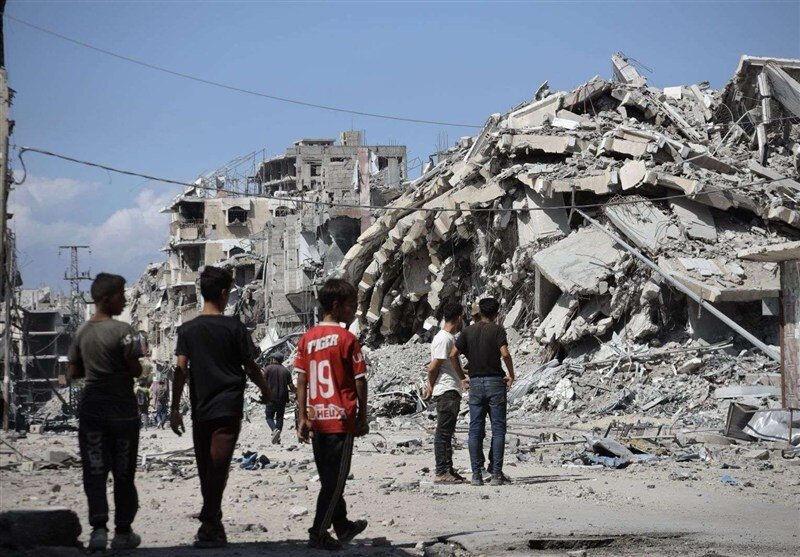Fragile ceasefire in Gaza: Challenge of achieving lasting peace
By Mohammad Khatibi

The recent declaration of a ceasefire in Gaza has been met with cautious optimism by the international community. While U.S. President Donald Trump and other global leaders have framed it as a potential turning point, the situation on the ground suggests that the road to lasting peace remains deeply uncertain.
Hamas has not been dismantled despite various military efforts aimed at weakening its operational capabilities by Tel Aviv. The organization’s extensive and sophisticated tunnel infrastructure remains largely intact, allowing it to maintain strategic advantages and continue its activities underground. These tunnels serve multiple purposes, including the movement of personnel, transfer of weapons, and surprise attacks, making it difficult for Israeli forces to fully contain Hamas.
Moreover, the group has successfully managed to hold captives for over two years, a situation that highlights both the group’s resilience and Israel’s ongoing challenges in dealing with the group. Despite Israel’s advanced technological capabilities, including surveillance systems, intelligence operations, and military technology, it was unable to retrieve Israeli captives or significantly disrupt Hamas’s core structures.
This ongoing stalemate underscores the complexity of the conflict and the limitations of technological and military superiority in addressing deeply entrenched and multifaceted operations by Hamas. Disarming Hamas has been on the agenda of talks in Egypt and if Israel continues to insist on the complete disarmament of Hamas as a precondition for any lasting resolution, the prospect of long-term peace may remain out of reach.
This approach overlooks the political and ideological calculus that drives Hamas’s resistance. For Hamas, its military wing is not merely a tool of warfare but a critical pillar of its political identity and leverage—both domestically and in the broader regional context.
The organization recognizes that relinquishing all its weapons would significantly weaken its influence, erode its ability to negotiate from a position of strength, and potentially render it politically irrelevant in the eyes of its supporters. This is particularly evident in the group’s response to attempts to assassinate its political leadership abroad, notably in Qatar—which have only reinforced its belief in the need for armed resistance as a form of deterrence and survival.
While Hamas is highly unlikely to agree to total disarmament, there are signs it may be open to certain compromises, particularly under the right political conditions or as part of a broader negotiated settlement that includes tangible benefits for Palestinians in Gaza and the West Bank. These could include limited disarmament tied to reciprocal concessions, international guarantees, or political recognition. However, as long as disarmament is framed as an ultimatum rather than a component of a mutual agreement, Hamas is expected to resist, seeing such demands as existential threats rather than steps toward peace.
As a result, rigid insistence on complete disarmament without addressing the underlying political dynamics may prolong the conflict rather than resolve it.
The ceasefire is likely to hold in general terms, with both parties maintaining a broad adherence to its conditions, especially if there is sustained international pressure on Israel and regional mediation. Tel Aviv, in particular, may be expected to uphold its commitment to refrain from launching large-scale military operations, recognizing the political and diplomatic costs of reigniting full-scale war.
However, as past experiences particularly along the Lebanese border, ceasefires in this context are rarely absolute. Israel will carry out minor violations whether in the form of targeted air raids or drone incursions. These incidents may not reflect a formal breakdown of the truce, but rather the complex and often volatile dynamics on the ground or efforts by Israel to test the limits of the agreement.
Additionally, Hamas does not operate in isolation but is an integral part of a broader regional network, the “Axis of Resistance.” While each of these groups pursues its own distinct strategic objectives shaped by local contexts, they are united by shared ideological foundations, and this interconnectedness significantly complicates Israel’s efforts to isolate Hamas or dismantle its military capabilities through unilateral action.
In the coming months, the durability of the ceasefire will depend not only on the actions of Hamas and Israel but also on the involvement of regional powers and the willingness of both parties to engage in pragmatic, rather than maximalist, negotiations. Without addressing the core political issues and the wider regional entanglements, the current calm may prove to be yet another pause in a conflict with no clear end in sight.
Leave a Comment